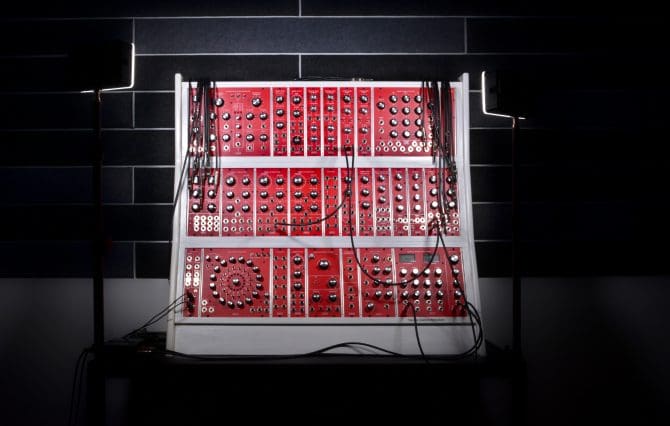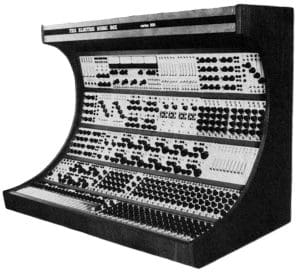There are a number of exceptional audio/visual resources available at the Lawrence Public Library. The SOUND+VISION Studio has been a hallmark of the library since the building's remodeling, with enough recording resources to accommodate spoken word projects, singer-songwriter arrangements, full-on bands, video interviews, graphic design, photo editing and more (though we are still getting the Recording Studio and Creative Suite A back up to speed for use. Creative Suites B and C are currently available for reservations).
It even has resources for digitizing analog media. Your cassettes, VHS tapes, and vinyl records all can be digitally converted and taken home at S+V. What's more, a number of the resources available in S+V are also available for checkout via our A/V Tools Collection, so if you want to convert tapes or record some basic audio at home, you can!
Perhaps my favorite resource available with the S+V Studio is our custom built (by Jason Fry of Free State FX) modular synthesizer. It's actually ridiculous when you think about it - such a beautiful, esoteric piece of musical equipment in a public library, to use FOR FREE with only a library card. But what is a modular synthesizer? In a way, you can think of them as systems of audio Lego. You start with one piece that is the source of your sound, then connect it to other pieces (modules, in this case) that modify the sound and give it character. Pretty soon, you've connected three, four, or a dozen modules together to create an amazing structure of sound.
Modular synthesizers date back to the 1950's, with the first icons of modular synths released in the 60s: the Moog and Buchla systems.
The initial years of these systems were filled with discovery and experimentation as musicians and audio engineers found what these machines were capable of. Pretty soon, some of the most wonderful, technically interesting music you could ever hear would bubble up. One of the early icons of modular synthesis is Wendy Carlos, who went on to utilize modular synths in recreations of famous classical music pieces and film scores. Here is a snippet of her explaining her modular system in detail. Similarly to Carlos' usage of the Moog system, the Buchla system has Suzanne Ciani as one of its great proponents and creators.
Modular synth culture is vast and deep nowadays. A basic Youtube search will yield countless amazing results. There are examples of beautiful droning pieces, pulsing dance music, futuristic chilled-out soundscapes, and much more.
And of course, I would be remiss to not highlight some exemplary usage of the LPL modular by Jade Rose and Beta Crystals.
The primary obstacles of getting into modular synthesis are A) the entry price, and B) how dang complex they are. Luckily, LPL has you covered on the first one. We've got Big Red ready to go with your library card, and it lives on wheels so we can wheel it into Creative Suite C for use while the main Recording Studio is still closed (just make sure to select "Modular Synthesis" on your reservation details!).
As mentioned, there is much to learn about the basics of modular synthesis. Oscillator? Envelopes? Control Voltage? What does all that mean? Thankfully, we can also help with that. With your library card, you have access to LinkedIn Learning, which contains countless hours of informational videos and lectures, INCLUDING an entire overview on modular synth basics!
(To navigate to LinkedIn Learning: go to the LPL website >>> Click on Resources >>> Click LinkedIn Learning >>> You will be prompted to enter your library card at this time to gain access)
And keep an eye out, because I and my department will be working on a modular basics video that focuses specifically on the LPL modular! We hope to make this historically niche and somewhat unattainable technology exciting and accessible to you and all of your future synthesis pursuits.
-Joel Bonner is a Technology Assistant at Lawrence Public Library.






Add a comment to: Turned on to Modular Synthesis